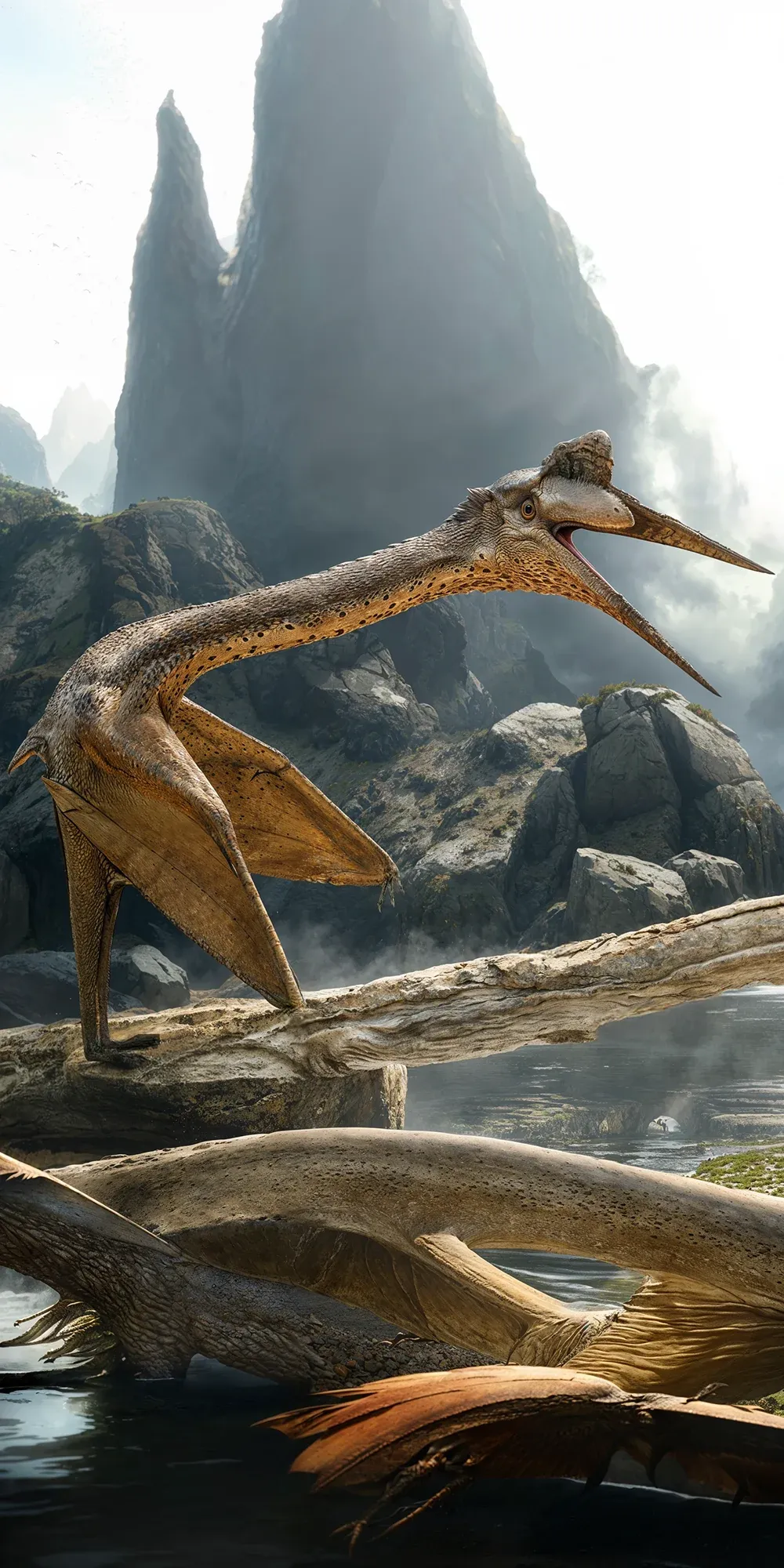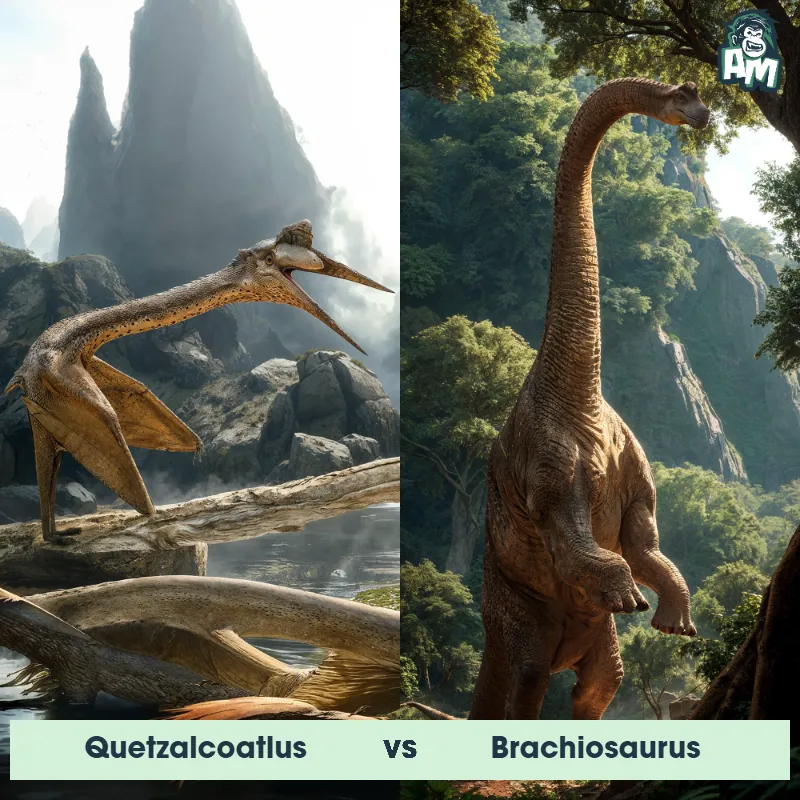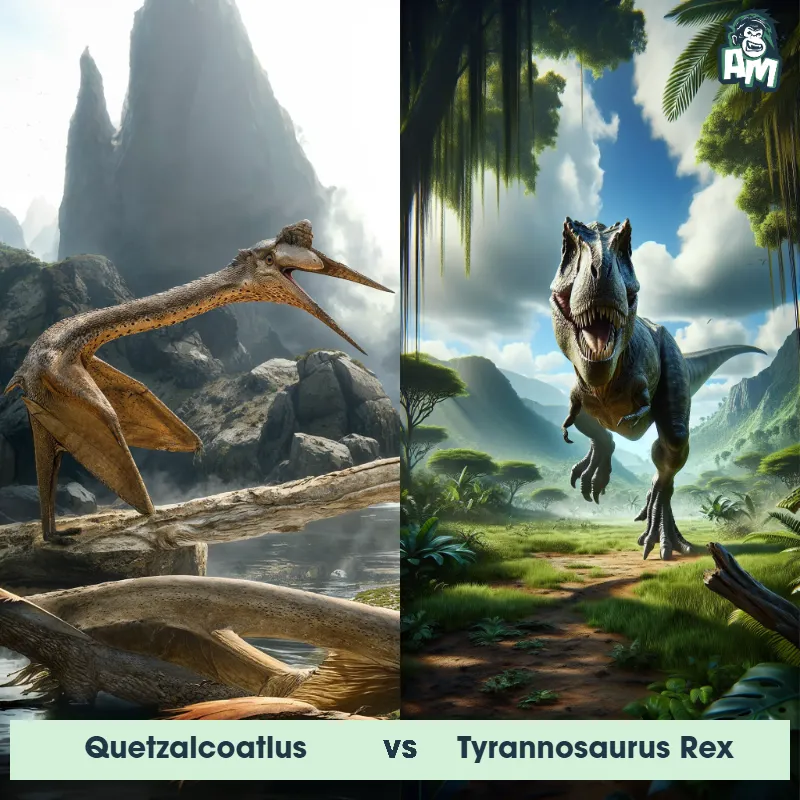The Quetzalcoatlus
The Quetzalcoatlus, also known as the "king of the skies," was a massive pterosaur that lived during the Late Cretaceous period. With a wingspan of up to 36 feet, it is considered one of the largest flying animals to have ever existed. Its long, toothless beak, sharp claws, and impressive size made it a formidable predator in the prehistoric skies.

| Quetzalcoatlus | |
|---|---|
| Size | Wingspan up to 33 feet (10 meters) |
| Weight | Around 500 pounds (227 kilograms) |
| Speed | 80mph (129km/h) |
| Key Strength | Aerial agility |
| Biggest Weakness | Vulnerable on the ground |
| Scientific Name | Quetzalcoatlus northropi |
| Family | Azhdarchidae |
| Habitat | Coastal areas |
| Geography | North America |
| Diet | Fish and small prey |
| Lifespan | 25 years - 30 years |

The Quetzalcoatlus
The Quetzalcoatlus, also known as the "king of the skies," was a massive pterosaur that lived during the Late Cretaceous period. With a wingspan of up to 36 feet, it is considered one of the largest flying animals to have ever existed. Its long, toothless beak, sharp claws, and impressive size made it a formidable predator in the prehistoric skies.
Fun Fact: The Quetzalcoatlus could reach speeds of up to 80 miles per hour in the air, making it a swift and agile hunter.
| Quetzalcoatlus | |
|---|---|
| Size | Wingspan up to 33 feet (10 meters) |
| Weight | Around 500 pounds (227 kilograms) |
| Speed | 80mph (129km/h) |
| Key Strength | Aerial agility |
| Biggest Weakness | Vulnerable on the ground |
| Scientific Name | Quetzalcoatlus northropi |
| Family | Azhdarchidae |
| Habitat | Coastal areas |
| Geography | North America |
| Diet | Fish and small prey |
| Lifespan | 25 years - 30 years |
Quetzalcoatlus Matchups
We use AI to simulate matchups between the Quetzalcoatlus and other animals. Our simulation considers size, strength, and natural predatory behaviors to determine the most likely outcome.

Can't find the Matchup you want?
Create Your Own MatchupQuetzalcoatlus: Diet, Predators, Aggression, and Defensive Behaviors
What did Quetzalcoatlus eat?
Quetzalcoatlus were likely carnivorous, preying on small animals like fish, lizards, and possibly even small dinosaurs. Their large size and long, pointed beak would have allowed them to easily catch and consume their prey.
Did Quetzalcoatlus have any predators?
As apex predators themselves, Quetzalcoatlus likely did not have many natural predators. However, they may have been vulnerable to larger predatory dinosaurs, such as Tyrannosaurus rex, if they were to come into contact with them.
Were Quetzalcoatlus aggressive?
There is no definitive evidence to suggest that Quetzalcoatlus were particularly aggressive towards other creatures. They were likely more focused on hunting for food and surviving in their prehistoric environment.
Did Quetzalcoatlus engage in fights?
Quetzalcoatlus may have engaged in fights with other members of their species over territory or mating rights. However, these fights were likely more focused on displays of dominance rather than causing serious harm to one another.
How did Quetzalcoatlus defend themselves?
Quetzalcoatlus likely relied on their massive size, speed, and aerial agility to defend themselves against potential threats. Their ability to fly would have allowed them to quickly escape from dangerous situations or predators, as well as potentially using their sharp beak as a weapon if necessary.
What was Quetzalcoatlus' biggest weakness in a fight?
Despite their size and strength, Quetzalcoatlus' biggest weakness in a fight would likely be their relatively fragile bone structure. Being a pterosaur, their bones were hollow and lightweight to aid in flight, making them more susceptible to injury compared to other dinosaurs with solid bones.
Fun Fact: Despite its massive size, the Quetzalcoatlus likely spent much of its time soaring and gliding through the air, conserving energy by using air currents.
Fun Fact: Some scientists believe that the Quetzalcoatlus may have been able to stand upright on its hind legs, using its wings as front limbs to grab prey or navigate its environment.












